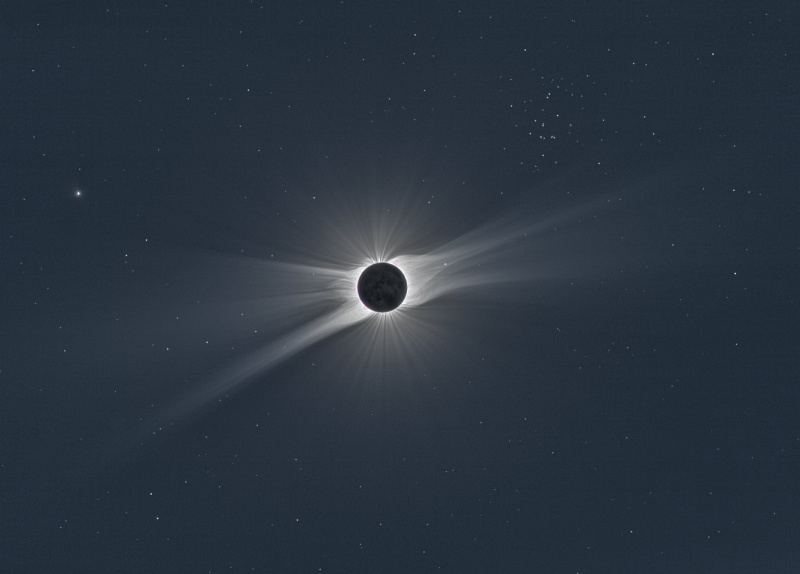
|
Credit & Copyright: Miloslav
Druckmuller (Brno University of Technology),
Peter Aniol,
Vojtech Rusin
Explanation:
For a moment on August 1st, the daytime
sky grew dark along the path of a
total solar eclipse.
While watching the geocentric
celestial event from Mongolia,
photographer Miloslav Druckmuller recorded multiple images with
two separate cameras as
the Moon blocked the bright solar
disk and darkened the sky.
This final composition
consists of 55 frames ranging in exposure
time from 1/125 to 8 seconds.
It spans nearly 12 degrees,
with the relative position of the Moon and Sun corresponding to
mid-eclipse.
On the left is bright planet Mercury,
but many stars are also
visible, including the Praesepae star cluster (also known as M44
or the Beehive cluster)
in Cancer, above and to the right of the silhouetted Moon.
Remarkably, the nearly perfect conditions and wide range
in individual exposures allow the composite picture to
register the lunar surface and follow the delicate
solar corona
out to a distance of nearly 20 times the radius of the Sun.
In fact, the composite presents a range in brightness
beyond what the eye could see
during
the eclipse.
|
January February March April May June July August September October November December |
| ||||||||||||||||||||||||||||||||||||||||||||||||
NASA Web Site Statements, Warnings, and Disclaimers
NASA Official: Jay Norris. Specific rights apply.
A service of: LHEA at NASA / GSFC
& Michigan Tech. U.
Based on Astronomy Picture
Of the Day
Publications with keywords: total solar eclipse - star cluster
Publications with words: total solar eclipse - star cluster
See also:
